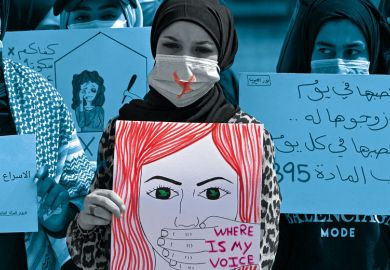Shanghai's one-time status as the "Paris of the Orient" offers a unique vantage point from which to study China's social transformation between the mid-19th and mid-20th centuries. Prostitution in Shanghai, at the interface between respectable and disreputable society, was a "mirror" of these changing social and economic conditions, according to Christian Henriot. In the heyday of the glamorous courtesans, prostitution occupied a special position, because of the customary and rigid segregation of the sexes. The changing fortunes of the literati in the early 20th century and the increasing entry of women into Shanghai's labour force blurred the distinction between elite and common prostitutes. The former courtesans, from whom sex was just one of many pleasures sought by the scholar and merchant elites, were transformed into ordinary prostitutes.
Henriot's intricate picture, superbly translated by Noel Castelino, is based on meticulous analysis of an enormous range of materials: guidebooks, memoirs and "biographies", newspapers, medical texts, police records and the archives of the French and international settlements. These provide a wealth of information about many hitherto-unexplored aspects of prostitutes' conditions of work and livelihood, such as the internal layout of courtesans' houses and prostitutes' "hotels", detailed maps of the areas occupied by prostitutes at different periods, methods of hygiene and sanitation, financial arrangements with madams as well as with clients and quarrels between prostitutes and madams. Only a few aspects are missing, notably prostitutes' social and economic links with their natal families, pregnancy, childbirth and care of their children.
Although the status of the prostitute was by no means enviable, prostitution in Shanghai was not subject to the moralising condemnation associated with western social reformers. Attempts to regulate the trade between the 19th and mid-20th centuries came to little, at first because of lack of widespread knowledge of public health practices. Only in the 1920s did the explosion of sex work become a recognised "social problem", but even then there was no dispute about its right to exist. Indeed, in the 1930s, growing local concern about the white slave trade was constrained by ideological commitments associated with the Anglo-American community. Even Chinese nationalists condemned prostitution more for its effects on "national vitality" than on moral grounds.
I welcome Henriot's challenge to the view that the Shanghai prostitute was a relentlessly exploited, miserable victim of male greed. His data show that while in most cases poverty explains why women went into sex work, the prostitutes were by no means all or even mainly from rural areas, nor were they hopelessly exploited, at least in economic terms. Courtesans and high-class prostitutes could earn considerably more than in other forms of female labour, and attempts to rehabilitate prostitutes frequently ended in return to the streets. Henriot does not pursue possible overlaps between lower-class sex work and regional discrimination, but he suggests that prostitution in Shanghai was too heterogeneous to be explained in simple terms.
But valuable though the book is, it has some problems. Henriot's antipathy to "mere discourse" leads him to disdain, and at times totally ignore other historians, including some with major contributions to the understanding of gender and sexuality in modern China. Thus, Charlotte Furth's critique of Robert van Gulik's approach to sexual pleasure is absent from Henriot's discussion of van Gulik's arguments; Gail Hershatter's important work on prostitution, Dangerous Pleasures , is mentioned only in a negative light; and Susan Gronewold's work is dismissed as "ahistorical". Henriot's insistence that he has not been "taken in" by discourse is confusing, given his extensive use of sources also used by those he belittles. Historians have long realised that their work is not a matter of retrieving a past, but rather a tracing of the historical subject through multiple readings of their sources. Where is the line drawn between "discourse" and the "intention to truth", as described by Henriot? How is the reader to understand the status of the quotations, including Foucault's, that appear at the beginning of the book?
Henriot's desire to distance himself from the work of women historians, besides neglecting major contributions, also leads him into some tight corners. An example is his antipathy to Hershatter's "hierarchy of prostitution". She attaches more significance to the classificatory enthusiasm of the late imperial commentators than does Henriot, but his own descriptions of the different "levels" of prostitutes intersect Hershatter's approach more than he acknowledges. Elsewhere, he takes issue with "some women historians" who see prostitution as a "variant of the trade in women" in Chinese society. He gives no reference to any specific arguments here, so it is difficult to follow his point, especially when he later concludes that prostitutes form "the most conspicuous group" in the "huge many-sided traffic in women" in China.
Another weakness is the book's treatment of sexuality. Despite its title, Henriot devotes little attention to sexuality, either as an analytical category or as a series of representational and bodily practices. Indeed, he states that "prostitution sheds little light" on sexuality. His generalisations concerning the ways in which "the Chinese relate to sexuality", or about the fact that "sex occupied a major place in the male psychology", are in striking contrast to the rigour of most of his narrative. It is not true, as he asserts, that written works were silent on sex during its growing "externalisation" in the 20th century: there were enormous numbers of publications on venereal diseases, contraception, abortion and related sexual matters in the late imperial and early republican period.
More than 15 years ago, when the author embarked on the research that produced this book, sexuality was largely absent from historical scholarship on China. Since then, in large part as a consequence of the feminist women historians whose work Henriot disdains, gender and sexuality, including prostitution, have been reluctantly recognised as areas of analysis crucial to the study of social change. This book is a rich addition to the field. But it would have been more generous for its author to regard his differences with fellow scholars as points for discussion, rather than simply asserting the superiority of his own method.
Harriet Evans is reader in Asian studies, University of Westminster.
Prostitution and Sexuality in Shanghai: A Social History, 1849-1949
Author - Christian Henriot
ISBN - 0 521 57165 0
Publisher - Cambridge University Press
Price - £60.00
Pages - 467
Translator - Noel Castelino
Register to continue
Why register?
- Registration is free and only takes a moment
- Once registered, you can read 3 articles a month
- Sign up for our newsletter
Subscribe
Or subscribe for unlimited access to:
- Unlimited access to news, views, insights & reviews
- Digital editions
- Digital access to THE’s university and college rankings analysis
Already registered or a current subscriber? Login



